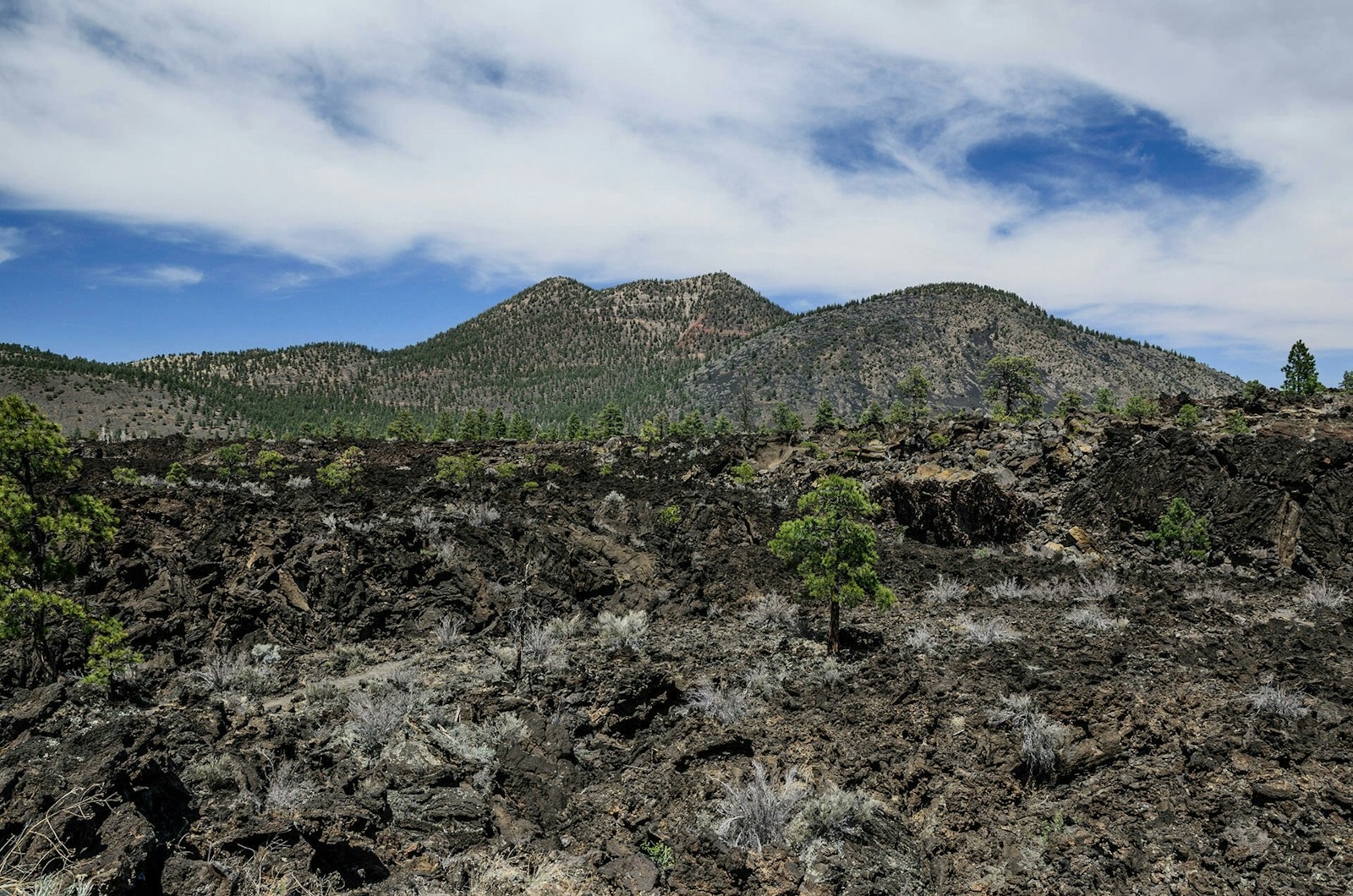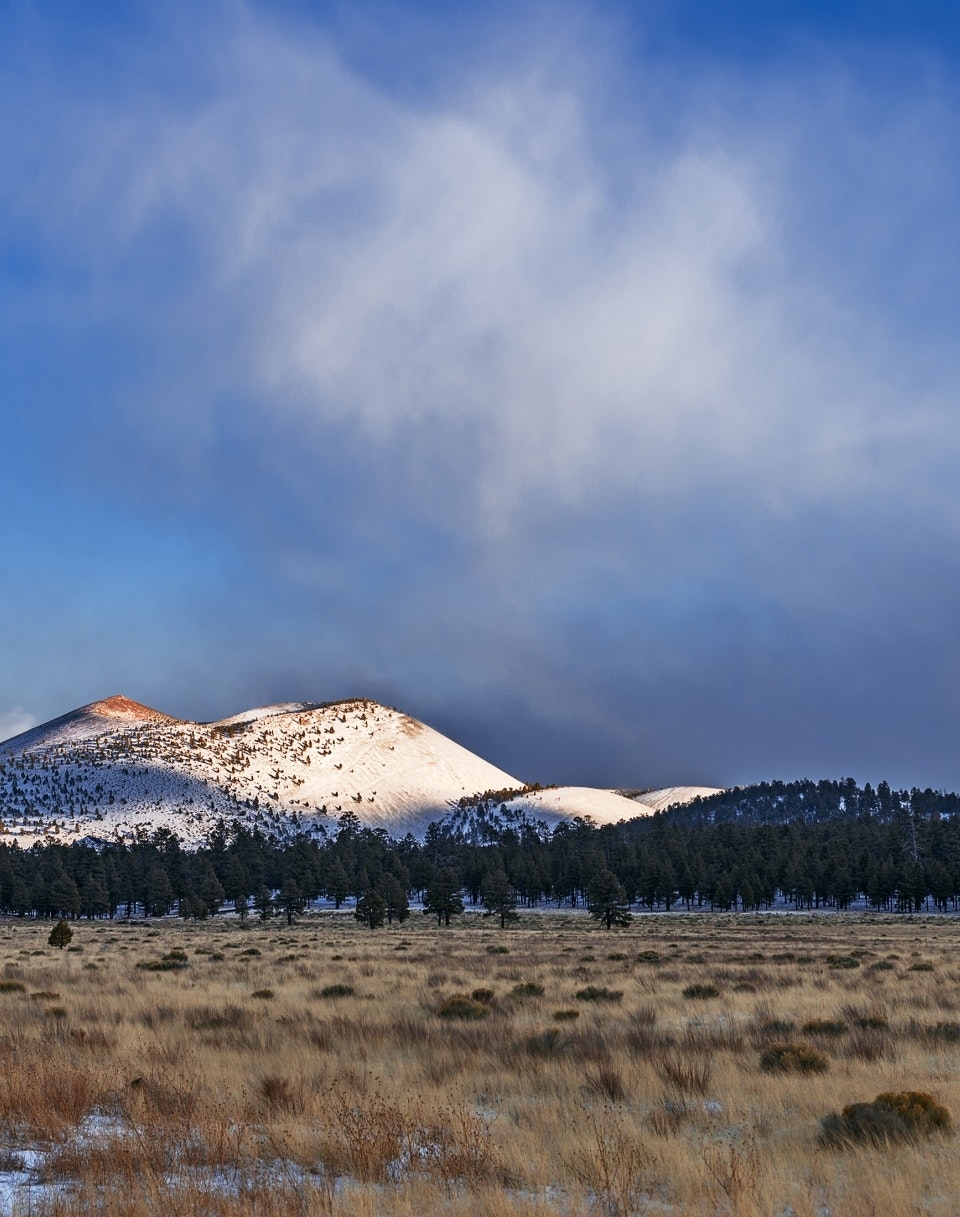
Sunset Crater Volcano National Monument

Remind me that the most fertile lands were built by the fires of volcanoes.
Sunset Crater and Lenox Crater Volcanoes were born in a series of eruptions sometime between 1040 and 1100. Powerful explosions profoundly affected the lives of the local population and forever changed the landscape and ecology of the area.
People had been living in the area for at least several hundred years before the volcanoes erupted. Although we don't know what they called themselves, archeologists consider them representatives of the Sinagua culture. They were farmers, living in scattered groups adjacent to their corn fields. Their homes were pithouses, dug partially into the ground.
900 years later, Sunset Crater is still the youngest volcano on the Colorado Plateau. The volcano's red rim and the dark lava flows seem to have cooled and hardened to a jagged surface only yesterday. As plants return, so do the animals that use them for food and shelter. And so do human visitors, intrigued by this opportunity to see natures response to a volcanic eruption.
Arizona's Sunset Crater Volcano reshaped the nearby landscape, and now offers hiking, scenery of flora like Ponderosa Pines, and an array of wildlife.